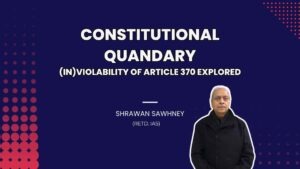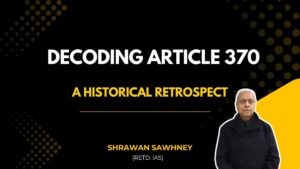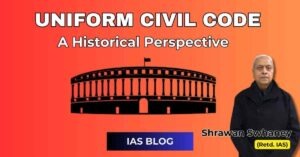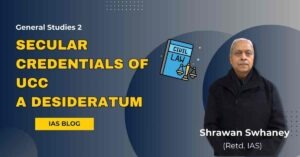Sedition in India-Modern Era
Sedition in India-Modern Era
English inhabitants in India requested the then Indian rulers to grant them the privilege of being governed by the English law. Indian rulers acceded to this request which led to the wholesale import of English law in India.
The law of sedition in India is an offshoot of English law. In the earliest English law, any infringement of the bond of fealty was punishable. This element is well marked in ‘seditio exercitus vel regmi’ – a betraying of the army or of the realm. Incitement to disorder and exciting ill-will between different classes of the King’s subjects was a serious crime against the state. This English criminal law crystallised in the famous Treason Act, 1351 III and Treason Act, 1795. The picture of the system of law prevailing in India at the advent of the 19th century was one of confusion and chaos. In the words of Sir Henry Maine India was then “a country empty of law.” The enactment of the Charter Act, 1833 and the creation of an allIndia Legislative Council form a most significant watershed in the legal history of India. Macaulay rightly observed-“our principle is simply this – uniformity where you can have it; diversity where you must have it, but in all cases certainty.”
A Law Commission, under the aegis of Lord Macaulay, was appointed to enact a uniform criminal law for India. Section 113 of the Draft Penal Code, proposed by the Law Commission, made excitation of feelings of disaffection against the government established by law in the territories occupied by the East India Company as criminal.” The origin of Section 124A and the history of its introduction in Indian Penal Code, 1860 is both interesting and important. In 1837, it existed, in gremio, as one of the clauses of Macaulay’s draft Penal Code, but remained shelved for more than twenty years. When this Bill saw the light in 1860, strangely enough, the sedition clause, for some unaccountable reason, had been omitted.
The government of India badly felt the need for enactment of this clause when ‘Wahabi’ conspiracy case was going on. It is to be noted that Sir Barnes Peacock has appended a substitute section for Section 113 but it was rejected by the Select Committee of the House for being much more severe. Finally, on the lines of draft Section 113, Section 124A was enacted by the Special Act XXVII of 1870.
The first state trial for sedition on record is the case of Queen Empress vs. Jogendra Chunder Bose, better known as ‘Bangobasi Case,’ that being the name of the newspaper in which the alleged seditious matter appeared. In 1897 three notable trials took place – Queen Empress vs. Bal Gangadhar Tilak (ILR 22 Bom. 112), QueenEmpress vs. Ramchandra Narayan (ILR 1898 22 Bom. 45) and Queen Empress vs. Amba Prasad (ILR 1898 20 All. 55). Let us ascertain to what extent Section 124-A had been affected by the judicial utterances of the learned judges who took part in these trials. In the first place, it seems pretty clear that the term ‘disaffection’ had proved a ‘vexata quaestio’, for many definitions of this word had been offered which were not all exactly alike. Besides, the ‘explanation’ to the section had undoubtedly proved a veritable crux.
The raison d’etre of the contemplated amendment was stated by Mr. Chalmers, the member in charge of the bill. “As for the section”, he said, “which deals with the offence of exciting disaffection against the government……… I cannot say that it strikes me as model of clear drafting. The result of the cases was to establish that it is a criminal offence to stir up feelings of contempt or hatred for the government and that such conduct is nonetheless an offence because resort to actual violence is not advocated.” Thus, adapting these guidelines as to the language, Section 124-A was repealed and the present section was substituted therefor. The amendment affirmed in unmistakable terms the consentient opinions of the various High Courts which had been called to interpret the Section 124—A then extant. The introduction of the expression “bring into hatred or contempt” is traceable to Sir Comer Petheram’s charge in the Bangobasi trial, which he himself imported from the English law.
Thus, it is noticeable that Section 124-A has undergone subtle changes. It was adapted from time to time as a result of the constitutional changes by the Government of India Act, 1935, by the Independence Act, 1947 and by the Indian Constitution of 1950 (Adaptation of Laws Orders 1937, 1948, and 1950). Section 124-A has remained almost the same, with little changes, as it was in 1898.
The word ‘Sedition’ does not appear in Section 124-A, though it is only mentioned as a marginal note to Section 124-A. It simply gives the name by which the crime defined in the section is to be known. This species of offence against the state was not an invention of the Britishers in India but has been known to ancient civilizations for centuries as is discernible from the foregoing discussion. Every state has to be armed with the power to punish those who disseminate such feelings of disloyalty as have the tendency to lead to the disruption of the state or to public disorder.
By: Shrawan Sawhney (IAS Retd.)
The Views expressed by the author are personal.
Notes on Sedition in India-Modern Era
🔶 1. Introduction
Sedition law in India is a colonial legacy rooted in English criminal law.
The offence, although not originally Indian, evolved through historical necessity and legal development in British India.
Section 124A of the Indian Penal Code (IPC), dealing with sedition, was influenced by English Treason Acts (1351 & 1795).
🔶 2. Historical Background
British Influence: English settlers requested to be governed under English law, leading to import of English legal principles.
‘Seditio exercitus vel regmi’: Latin term implying betrayal of army or realm.
Treason in England: Meant incitement of ill-will or disorder between subjects — a serious offence against the Crown.
🔶 3. Evolution of Sedition Law in India
| Event | Description |
|---|---|
| 1833 | Charter Act created an all-India Legislative Council, laying groundwork for uniform laws. |
| 1837 | Macaulay’s Draft Penal Code included a sedition clause (Section 113), but it was shelved. |
| 1860 | IPC enacted, but sedition clause was omitted. |
| 1870 | Section 124A inserted through Special Act XXVII, due to Wahabi conspiracy trials. |
| 1898 | Section 124A amended to clarify the scope, based on judicial feedback. |
🔶 4. Important Sedition Trials in British India
Queen Empress vs. Jogendra Chunder Bose (Bangobasi Case) – First major sedition case.
Queen Empress vs. Bal Gangadhar Tilak (1897) – Most famous pre-independence sedition case.
Other notable trials:
Ramchandra Narayan Case (1898)
Amba Prasad Case (1898)
✍️ Disaffection was a key term debated in courts, leading to vagueness and judicial confusion.
🔶 5. Judicial Interpretation and Amendment (1898)
Mr. Chalmers, the drafter, acknowledged the section’s lack of clarity.
1898 amendment added terms like “hatred or contempt,” inspired by English legal terminology.
Aligns with Sir Comer Petheram’s interpretation during Bangobasi trial.
🔶 6. Constitutional Adaptation
Section 124A continued post-Government of India Act, 1935, Independence Act, 1947, and Constitution of 1950.
Adaptation of Laws Orders in 1937, 1948, 1950 maintained its structure.
The word “sedition” does not appear in the text of Section 124A, only in the marginal note.
🔶 7. Key Legal Insights
Sedition is not uniquely British or Indian; the concept exists in ancient civilizations as a necessary safeguard for state survival.
The law is meant to curb acts that incite disloyalty or disorder, not mere criticism or dissent.
🧾 Summary Chart
| Element | Details |
|---|---|
| Section | IPC Section 124A |
| Year Introduced | 1870 |
| Origin | Macaulay’s Draft Code (1837), based on English Treason Acts |
| Key Trials | Tilak (1897), Bangobasi (1891) |
| Key Terms | Disaffection, Hatred, Contempt |
| Amendments | 1898 (clarified scope), constitutional adaptations post-1935 |
| Present Status | Still in force, though under judicial scrutiny |
Mains-Based Questions on Sedition in India-Modern Era
Q1. Examine the historical evolution of the sedition law in India. In your opinion, does Section 124A of IPC reflect colonial priorities or democratic values? Justify.
(250 words)
Answer Framework:
Introduction
Define sedition (Section 124A, IPC) — criminalizes incitement of disaffection, hatred, or contempt against the government.
Mention its colonial origin and continued presence in Indian law.
Body
✅ Historical Evolution
1833: Charter Act led to legal unification.
1837: Macaulay’s draft included sedition (Section 113), but was shelved.
1870: Introduced formally via Special Act XXVII due to Wahabi trials.
1898: Amended post confusion in Tilak, Bangobasi trials to include “hatred” and “contempt”.
✅ Reflection of Colonial Priorities
Used against nationalist leaders (Tilak, Bose) to suppress dissent.
Language adopted from English Treason laws aimed at protecting the British Crown, not people’s will.
✅ Current Relevance & Democratic Values
Used to curb expression, including criticism of government.
Critics argue it violates Article 19(1)(a) — Freedom of Speech and Expression.
Proponents: Necessary for state integrity and internal security.
Conclusion
While originally colonial, its continued use without reform challenges democratic ethos.
Reforms or repeal are needed to align it with constitutional morality and human rights jurisprudence.
Q2. The offence of sedition, though rooted in colonial law, has undergone several judicial and legislative changes. Critically analyze the judicial contribution to the shaping of Section 124A.
(250 words)
Answer Framework:
Introduction
Briefly introduce Section 124A and its colonial origin.
State that judicial interpretation has played a key role in defining its scope.
Body
✅ Key Judicial Cases in Colonial Era
Queen Empress v. Jogendra Chunder Bose (1891): First sedition trial — “Bangobasi case”.
Queen Empress v. Bal Gangadhar Tilak (1897): Defined “disaffection” broadly to include political dissent.
Disagreement among judges led to confusion about the term’s scope.
✅ Judicial Clarifications Post-Independence
Kedar Nath Singh v. State of Bihar (1962):
Upheld constitutionality of Section 124A.
Narrowed its scope: Only incitement to violence or public disorder is punishable.
Mere criticism of government is not sedition.
✅ Recent Observations
Supreme Court (2021): Termed sedition law as “colonial” and questioned its relevance.
Some High Courts have called for repeal or re-examination of its necessity.
Conclusion
Judiciary has played a dual role: preserving the law while attempting to prevent its misuse.
However, inconsistent application and political misuse persist; judicial activism alone is not sufficient without legislative reform.
Q3. Discuss the implications of retaining colonial-era laws like sedition in contemporary India. How can India strike a balance between national security and freedom of speech?
(250 words)
Answer Framework:
Introduction
Sedition law (Section 124A) is a colonial tool used to curb dissent.
Today, it remains part of Indian law despite independence and constitutional guarantees.
Body
✅ Implications of Retaining Sedition Law
Democratic Deficit: Contradicts Article 19(1)(a) — Freedom of Speech.
Chilling Effect: Citizens and journalists may fear criticism of the government.
Political Misuse: Increasing cases against activists, comedians, journalists.
International Criticism: Impacts India’s democratic image globally.
✅ Arguments for Retention
National security threats: hate speech, terrorism, insurgency.
Need for legal deterrence against anti-national activities.
✅ Striking a Balance
Clearer definition of sedition: restrict to incitement to violence only.
Judicial safeguards: Mandatory prior sanction before FIR.
Periodic Review: Sunset clause or regular parliamentary scrutiny.
Promote civic education on responsible dissent and free speech.
Conclusion
Balancing state security and fundamental rights is crucial.
The law must evolve with democratic values while keeping state sovereignty intact.
Prelims Questions based on Sedition in India-Modern Era
-
Constitutional Quandary: Inviolability of Article 370 Explored
Upon adoption of the Constitution of India, the preamble proclaimed,... -
Decoding Article 370 – A Historical Retrospect
The Apex Court is currently hearing petitions disputing the amendment... -
Sedition In India-Modern Era
English inhabitants in India requested the then Indian rulers to... -
Sedition In India – A Historical Retrospect
Sedition is perhaps the very vaguest of all offences known... -
Contours of Free Speech
Recent a spate of cases against stand-up comics Munawar Faruqui,... -
Generation-Z And Clout Culture
Generation Z, also known as Gen Z-ers and Zoomers, is... -
Community Resources :An Equitable Landscape
Community Resources: An Equitable Landscape Table of Contents Blog - Community... -
Federalism and the Covid-19 Pandemic: A Constitutional Perspective
Recently, an article in a leading English national daily made... -
Uniform Civil Code – A Historical Perspective
Article 35 of the draft Constitution of India provided that... -
Secular Credentials Of UCC – Shrawan Sawhney
Recently, the 22nd Law Commission of India has set the...











